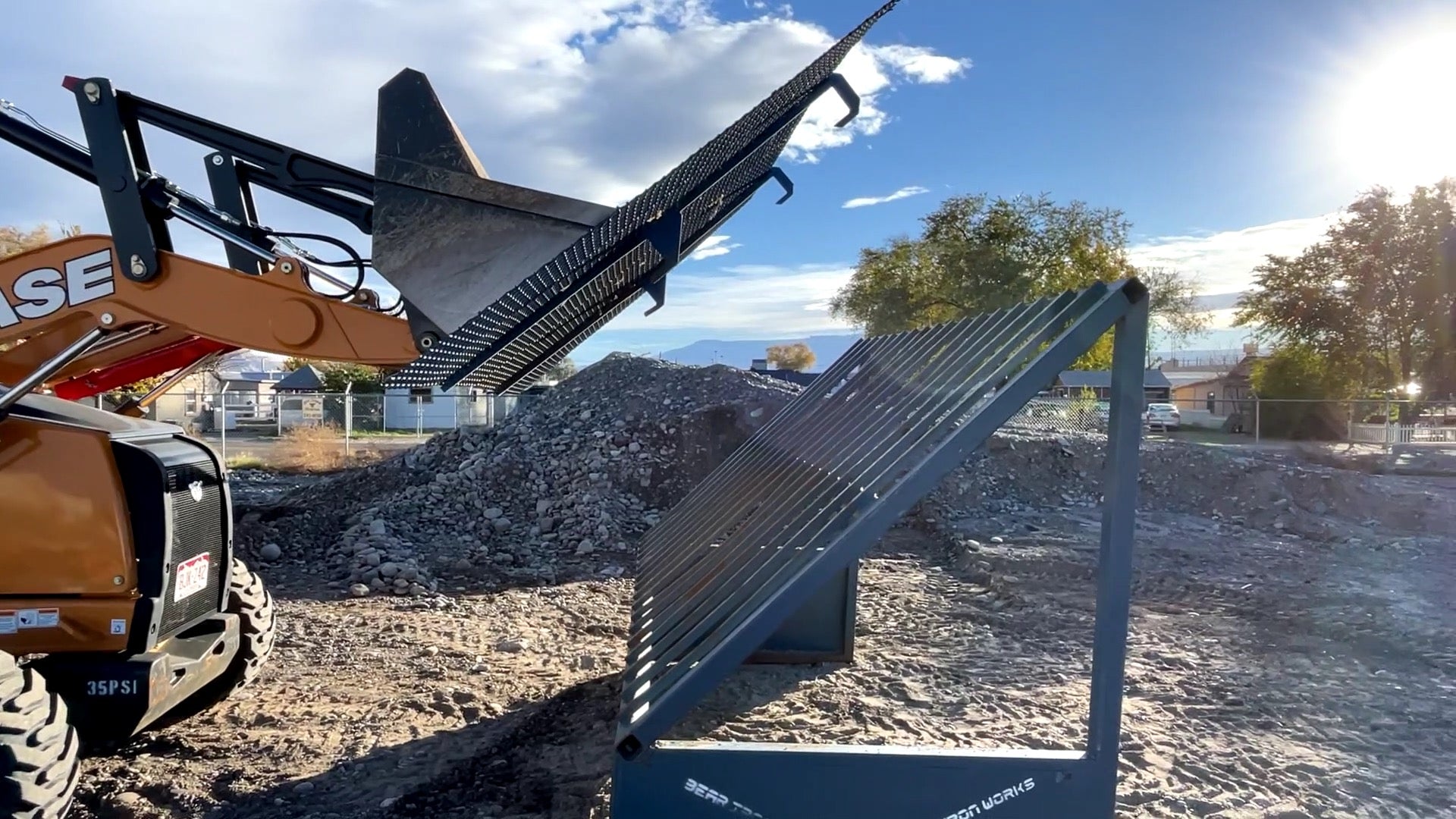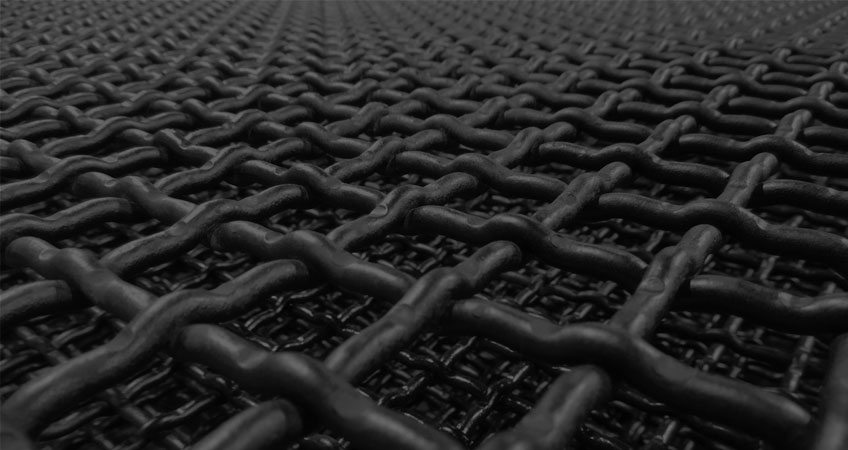Enhance Product Recovery With State-Of-The-Art Dust Screens for Recycling Facilities
In today's globe, where ecological sustainability is a pressing worry, reusing centers play a pivotal function in minimizing waste and preserving sources. However, making the most of product recovery can be an intricate procedure, usually hindered by the existence of dirt and debris in the reusing stream. This is where modern dust displays enter play, providing an encouraging option to improve product recovery prices. By efficiently separating undesirable pollutants, these advanced screens hold the possible to revolutionize reusing facilities' procedures. Exactly how specifically do dirt screens enhance material recuperation? What are the vital attributes that make them advanced? And how can reusing facilities execute them effectively? In this discussion, we will certainly discover the solution to these concerns and look into real-life situation research studies that highlight the effective assimilation of dust displays in recycling facilities. Prepare to uncover the transformative power of state-of-the-art dust screens and their effect on boosting material healing.
The Importance of Dirt Screens in Recycling Facilities
Dirt displays play a crucial function in recycling facilities by effectively dividing dust and other pollutants from recyclable materials. These screens, additionally called trommel screens, are created to properly eliminate undesirable particles and make certain that only tidy and functional materials are processed additionally.
The primary function of dust displays is to separate larger items of dirt, rocks, and various other non-recyclable products from the stream of products. By doing so, they avoid these impurities from entering the recycling procedure and possibly harmful equipment or endangering the high quality of the end product.
Furthermore, dust screens aid to enhance the total performance of recycling operations. By removing dust and other pollutants early while doing so, the screens minimize the amount of manual work called for to sort and clean the materials in the future. This not just conserves time but likewise minimizes expenses and enhances performance.
Furthermore, making use of dust displays adds to ecological sustainability. By guaranteeing that just clean and unpolluted materials are refined, recycling facilities can generate higher-quality recycled items. This, consequently, encourages the use of recycled products in different industries, minimizing the need for virgin sources and decreasing the ecological impact of source extraction and manufacturing processes.
How Dirt Screens Improve Material Recuperation
Making use of dust displays in reusing centers substantially boosts the process of product recuperation. These displays play an essential function in separating dust, particles, and various other undesirable products from the recyclable stream, causing enhanced performance and higher quality result.
One of the primary methods in which dirt screens boost product recovery is by eliminating contaminants that can impede the reusing procedure. Dirt, rocks, and various other non-recyclable items can create damages to tools, decrease the performance of subsequent sorting procedures, and pollute the last recycled products. By properly evaluating out these contaminants, dust displays help guarantee that the recyclable products stay pure and of high top quality.
Additionally, dust displays allow recycling centers to recoup a higher quantity of useful products. By removing dust and debris, the displays permit a more exact sorting procedure, increasing the recovery price of recyclable materials. This indicates that even more valuable resources can be recovered and recycled, lowering the demand for virgin products and decreasing the ecological impact linked with their removal and production.
Along with improving product healing, dirt displays also add to the overall effectiveness of recycling facilities. By preventing tools damage and minimizing downtime brought on by obstructions and obstructions, these displays aid preserve a nonstop and smooth recycling process. This increased performance translates into price savings and permits for greater throughput, eventually enhancing the success and sustainability of recycling procedures.
Key Attributes of State-of-the-Art Dust Screens
To even more enhance the performance and efficiency of product recovery in recycling facilities, state-of-the-art dirt displays are geared up with essential features that optimize the splitting up procedure and ensure the highest quality outcome (dirt screen for sale). These attributes include sophisticated testing modern technology, customizable settings, and robust building
One trick function of state-of-the-art dust displays is their innovative testing technology. These displays are created with precision-engineered mesh or perforated plates that effectively separate dirt and particles from the recyclable materials. The dimension and spacing of the openings in the screens can be tailored to suit different types of materials, enabling effective splitting up and maximum healing prices.
One webpage more vital feature of these dirt screens is their adjustable setups. Reusing centers can readjust the rate, angle, and amplitude of the screens to optimize the splitting up procedure. This versatility enables operators to fine-tune the screens according to the specific demands of the products being processed, resulting in improved precision and higher recovery rates.
Furthermore, state-of-the-art dust displays are constructed with robust construction to endure the extreme conditions of recycling facilities. They are made from long lasting materials such as stainless steel or high-strength alloys, ensuring durability and minimal downtime due to upkeep or fixings. Additionally, these displays are created with simple gain access to for cleansing and upkeep, decreasing and helping with effective operations downtime.
Steps to Applying Dust Screens in Recycling Facilities
What are the essential actions for integrating dirt displays into reusing centers? Carrying out dust screens in recycling facilities includes a methodical method to ensure effective setup and procedure. The following are the essential actions to successfully incorporate dirt screens:
Evaluation: Conduct an extensive assessment of the center's needs and demands to identify the suitable dirt display specifications. Take into consideration aspects such as product kind, volume, and desired splitting up effectiveness.

Setup: Prepare the facility for the setup of the dust displays. This may include retrofitting existing tools or developing room for brand-new setups. Comply with maker standards and make sure correct placement and assimilation with the recycling procedure.
Testing and Calibration: Once the dirt displays are mounted, perform extensive screening to make certain correct performance. dirt screen for sale. Calibrate the system to accomplish desired splitting up efficiency and decrease material loss
Training and Upkeep: Train team on operating and maintaining the dust screen system. Establish a routine upkeep schedule, including cleansing and inspection, to make certain optimum efficiency and durability.

Study: Successful Material Healing With Dirt Screens
Integrating dust screens right into reusing facilities has proven to be a successful method for accomplishing efficient product recovery, as shown by several case researches. These case studies highlight the favorable effect of dirt displays on the overall recycling process.
One remarkable study originates from a reusing center in a major city. By executing dust displays, the center was able to substantially lower the quantity of contamination in their recyclable materials. This resulted in boosted sorting accuracy and enhanced recuperation rates for useful materials such as steel, plastic, and paper. The intro of dust screens additionally aided to tear and reduce the wear on sorting tools, decreasing maintenance costs and downtime.
One more instance research study showcases a rural recycling facility that had problem with too much dust and debris in their incoming waste stream. By mounting dirt displays, the center was able to get rid of a large part of the undesirable products, leading to cleaner recyclables and enhanced effectiveness in the arranging process. This resulted in greater product recuperation rates and decreased waste sent to the land fill.
These study show that integrating dirt displays into reusing facilities can have a considerable positive effect on product recuperation. By efficiently eliminating dust, debris, and other impurities, recycling facilities can improve their total recycling prices, decrease garbage dump waste, and take full advantage of the worth of recovered products.
Final Thought
To conclude, making use of cutting edge dirt displays in recycling centers is crucial for enhancing material recovery. These screens successfully eliminate dust and debris, permitting click here for more for the reliable separation and recovery of useful materials. By carrying out dust displays, recycling facilities can substantially improve their recycling procedures and add to a much more sustainable future.
One of the major ways in which dirt screens enhance material healing is by getting rid of pollutants that can impede the recycling process. By successfully screening out these pollutants, dirt displays aid guarantee that the recyclable materials stay pure and of click reference high top quality.
Furthermore, dirt screens allow reusing centers to recoup a greater amount of important products.In enhancement to improving material recovery, dust screens additionally contribute to the general effectiveness of recycling centers.In final thought, the use of modern dirt displays in recycling facilities is crucial for boosting material healing.